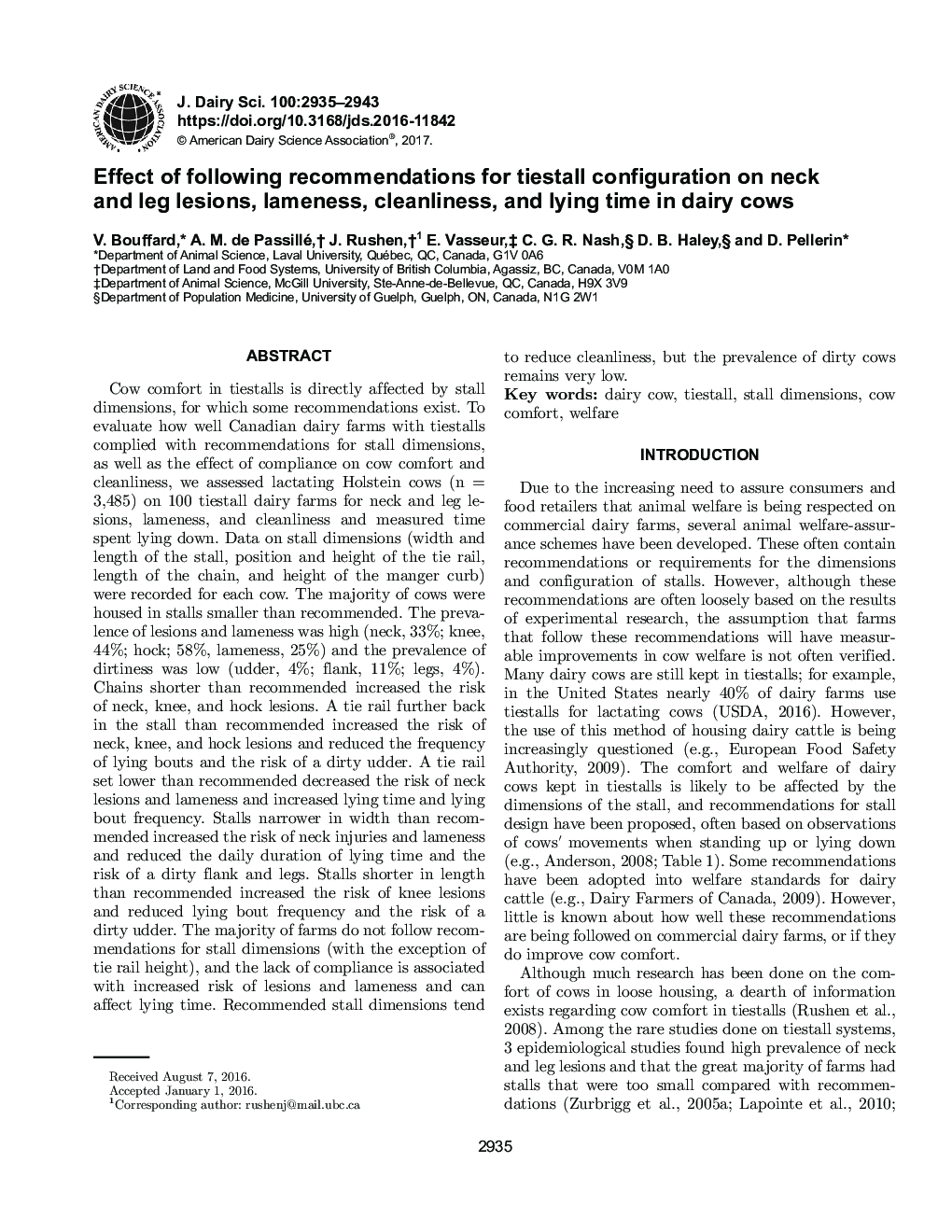| کد مقاله | کد نشریه | سال انتشار | مقاله انگلیسی | نسخه تمام متن |
|---|---|---|---|---|
| 5542349 | 1402517 | 2017 | 9 صفحه PDF | دانلود رایگان |
عنوان انگلیسی مقاله ISI
Effect of following recommendations for tiestall configuration on neck and leg lesions, lameness, cleanliness, and lying time in dairy cows
دانلود مقاله + سفارش ترجمه
دانلود مقاله ISI انگلیسی
رایگان برای ایرانیان
موضوعات مرتبط
علوم زیستی و بیوفناوری
علوم کشاورزی و بیولوژیک
علوم دامی و جانورشناسی
پیش نمایش صفحه اول مقاله

چکیده انگلیسی
Cow comfort in tiestalls is directly affected by stall dimensions, for which some recommendations exist. To evaluate how well Canadian dairy farms with tiestalls complied with recommendations for stall dimensions, as well as the effect of compliance on cow comfort and cleanliness, we assessed lactating Holstein cows (n = 3,485) on 100 tiestall dairy farms for neck and leg lesions, lameness, and cleanliness and measured time spent lying down. Data on stall dimensions (width and length of the stall, position and height of the tie rail, length of the chain, and height of the manger curb) were recorded for each cow. The majority of cows were housed in stalls smaller than recommended. The prevalence of lesions and lameness was high (neck, 33%; knee, 44%; hock; 58%, lameness, 25%) and the prevalence of dirtiness was low (udder, 4%; flank, 11%; legs, 4%). Chains shorter than recommended increased the risk of neck, knee, and hock lesions. A tie rail further back in the stall than recommended increased the risk of neck, knee, and hock lesions and reduced the frequency of lying bouts and the risk of a dirty udder. A tie rail set lower than recommended decreased the risk of neck lesions and lameness and increased lying time and lying bout frequency. Stalls narrower in width than recommended increased the risk of neck injuries and lameness and reduced the daily duration of lying time and the risk of a dirty flank and legs. Stalls shorter in length than recommended increased the risk of knee lesions and reduced lying bout frequency and the risk of a dirty udder. The majority of farms do not follow recommendations for stall dimensions (with the exception of tie rail height), and the lack of compliance is associated with increased risk of lesions and lameness and can affect lying time. Recommended stall dimensions tend to reduce cleanliness, but the prevalence of dirty cows remains very low.
ناشر
Database: Elsevier - ScienceDirect (ساینس دایرکت)
Journal: Journal of Dairy Science - Volume 100, Issue 4, April 2017, Pages 2935-2943
Journal: Journal of Dairy Science - Volume 100, Issue 4, April 2017, Pages 2935-2943
نویسندگان
V. Bouffard, A.M. de Passillé, J. Rushen, E. Vasseur, C.G.R. Nash, D.B. Haley, D. Pellerin,